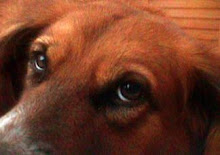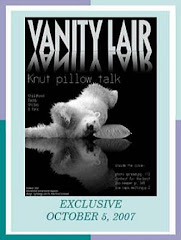Photo:Andrew Evans
Samstag Abend ist bei uns National Geographic Live angesagt, eine Sendung, die ich genieße, da man u.a. mal die Fotografen der Fotos zu Gesicht bekommt, die man gerne hat, oder weil man neue Geschichten und noch mehr neue Fotos entdeckt, auch wenn sie meistens ein paar Jahre zurückliegen. Letzten Samstag berichtete Andrew Evans von seiner Reise von Washington D.C. nach Antarctica per Bus, an seiner Endhaltestelle erwartete ihn eine kleine Überraschung, ein schwarzer Kaiserpinguin.-
Saturday evening is National Geographic time, a program I try not to miss as I enjoy to see the photographers whose photos I like or because one hears new traveling stories and discovers more new pics even when they date back already some years.Last Saturday it was Andrew Evan's turn with his account of his experience to travel from his hometown Washington D.C. to Antarctica by bus, at his final destination he was in for a big surprise as he was awaited by a black Emperor penguin.
Saturday evening is National Geographic time, a program I try not to miss as I enjoy to see the photographers whose photos I like or because one hears new traveling stories and discovers more new pics even when they date back already some years.Last Saturday it was Andrew Evan's turn with his account of his experience to travel from his hometown Washington D.C. to Antarctica by bus, at his final destination he was in for a big surprise as he was awaited by a black Emperor penguin.
"He looked like a single black king moving across a chessboard of so many white pawns. Our first glimpse was puzzling until we drew closer and realized that this was not some other bird but indeed another penguin of a different color.
Our group from Lindblad Expeditions spotted this very unique bird at Fortuna Bay on the subantarctic island of South Georgia. Out of several thousand pairs of king penguins, this was the only individual that was entirely black although earlier in the morning I had spotted another that showed muted coloration. Recent science papers show that the trait has been documented only a handful of times in South Georgia. Some fellow travelers recall seeing a melanistic penguin at St. Andrew's Bay, also on South Georgia.
Our group from Lindblad Expeditions spotted this very unique bird at Fortuna Bay on the subantarctic island of South Georgia. Out of several thousand pairs of king penguins, this was the only individual that was entirely black although earlier in the morning I had spotted another that showed muted coloration. Recent science papers show that the trait has been documented only a handful of times in South Georgia. Some fellow travelers recall seeing a melanistic penguin at St. Andrew's Bay, also on South Georgia.
Melanism is merely the dark pigmentation of skin, fur--or in this case, feathers. The unique trait derives from increased melanin in the body. Genes may play a role, but so might other factors. While melanism is common in many different animal species (e.g. Washington, D.C. is famous for its melanistic squirrels), the trait is extremely rare in penguins. All-black penguins are so rare there is practically no research on the subject--biologists guess that perhaps one in every quarter million of penguins shows evidence of at least partial melanism, whereas the penguin we saw appears to be almost entirely (if not entirely) melanistic.
So far, king penguins represent the most documented cases of melanism, though there is evidence of partial melanism appearing in other penguin species, namely Adélie, chinstrap, gentoo, macaroni and royal penguins.
Observing this black penguin waddle across South Georgia's black sand beach revealed no different behavior than that of his fellow penguins. In fact, he seemed to mix well. Regarding feeding and mating behavior there is no real way to tell, but I do know that we were all fascinated by his presence and wished him the best for the coming winter season." (source)
Photo:Krystina Richter
Viele zweifelten die Existenz dieses schwaryen Pinguins an, warfen Evans photoshopping vor, doch auch andere hatten Fotos dieses seltenenen Pinguinindividuums gemacht wie hier Krystina Richter, die ebenfalls zur Expeditionsgruppe von Evans gehörte.-
When Evans tweeted the pic of the black penguin, lots of people thought the black penguin was photoshopped but there were others who had taken photos of the same individual as Krystina Richter who was on the same expedition.
Photo:Krystina Richter
Und es gab andere, die bereits früher schwarze Pinguine gesehen hatten.-
And there were others who had seen black penguins before.
Bereits 2006 hatte Hugh Rose ebenfalls in Südgeorgien einen schwarzen Pinguin zu Gesicht bekommen.-
"After we blogged about the rare melanistic black penguin contributing editor Andrew Evans spotted while on South Georgia Island, we got a comment from Ted Cheeseman of Cheesemans' Ecology Safaris out of California, noting that he too had seen the black penguin in January 2006 while leading a tour through Fortuna Bay on South Georgia. One of his expedition leaders, photographer Hugh Rose, snapped this picture at the time, and says that's he's been looking for the penguin on every expedition he's been on since." (source)
Photo: Marc Nolan
Hier steht ein schwarzer
Königspinguin inmitten einer Kolonie seiner normal gefärbten
Artgenossen auf der Insel am Rande der Antarktis. Neugierig geht er erst
auf den Fotografen Michael Nolan zu, bevor er sich wieder im sein
Küken kümmert. Das steht inmitten seiner Kumpels in der Antaktischen
Pinguin-Kita. Melanistische Pinguine sind äußerst selten. Die Chancen,
einen zu treffen stehen 1: 100 000. (source)
Was die Chancen angehen, einen solchen Pinguin zu treffen, variieren die angenommenen Zahlen enorm..))
This playful black penguin stands out from the crowd on the island of
South Georgia. Wildlife photographer Michael Nolan travelled to the
Antarctic to capture the penguin breeding colonies when he came across
the rare male. The penguin came inquisitively out of the ocean and up to
Michael's feet, before returning to its chick (surrounded by other
"okum" boy chicks) to feed it. These 'black' penguins are known as
melanistic penguins and are incredibly rare (1 in every 30,000).Their
colour is caused by an increased amount of dark pigmentation of skin,
feathers, eyes or hair, resulting in a loss of pigmentation patterns in
their features.(source)
Photo: Marc Nolan
Little chick looking for the white spot...??
More pics of Marc Nolan's black penguin I found here
Photo: David Stephens
Aber es gibt auch Pinguine fast ganz in Weiß, die nicht wirkliche Albinos sind. In diesem Fall war es ein Chinstrap Pinguin, de David Stephens auf einer anderen Antarctica Expedition aud Aitcho Islands gefunden hat.-
But there are also white penguins.
"White penguins are rare, and spotting a leucistic Chinstrap penguin is a once-in-a-lifetime event. The nearly-white penguin chick was photographed Monday by David Stephens, a naturalist on the National Geographic Journey to Antarctica expedition.
Located on Antarctica's Aitcho Islands, the rare bird is described by Stephens as "whitish, but not quite albino." Also called albinistic penguins, the leucistic bird has a lower level of pigmentations and differ from albinos because they have pigmented eyes, according to ABC News."
Located on Antarctica's Aitcho Islands, the rare bird is described by Stephens as "whitish, but not quite albino." Also called albinistic penguins, the leucistic bird has a lower level of pigmentations and differ from albinos because they have pigmented eyes, according to ABC News."
"The rate of leucism in Chinstrap penguins is approximately 1 in 146,000."
Whatever the rate of meeting one, I just wish all these fellows long life whatever clothes they choose to wear!!
Sources:
- Today's Pic:Rare Black Penguin/Intelligent Travel Blog 03.03.2010
- More Black Penguin Sightings/Intelligent Travel Blog 05.03.2010
- Today's Pic:Rare Black Penguin/Intelligent Travel Blog 03.03.2010
- More Black Penguin Sightings/Intelligent Travel Blog 05.03.2010
- The Black Penguin/The Traveling Richters 11.03.2010
- Pictured: 'astonishing' rare black penguin living on South Georgia/The Telegraph 10.03.2010
- Picture of the day: 3 November 2011/ The Telegraph 03.11.2011
- Rare white penguin spotted in Antarctica/Digital Journal 13.01.2012
- Pictured: 'astonishing' rare black penguin living on South Georgia/The Telegraph 10.03.2010
- Picture of the day: 3 November 2011/ The Telegraph 03.11.2011
- Rare white penguin spotted in Antarctica/Digital Journal 13.01.2012






















































2 Kommentare:
Liebe Birgit,
Dein schöner Titel zu diesem außergewöhnlichen Farbphänomen ist einfach klasse!
An Dir ist auch eine gute Jounalistin verloren gegangen. So einen Pinguin von Angesicht zu Angesicht zu sehen, ist wie ein sechser im Lotto...
Liebe Grüße aus dem herbstlich kühlen Deutschland
von
Britta-Gudrun
...wenn man zu schnell schreibt:
natürlich Journalistin!
Britta-Gudrun
Kommentar veröffentlichen